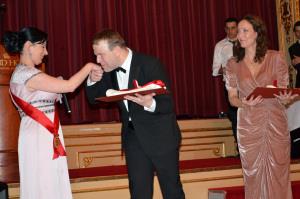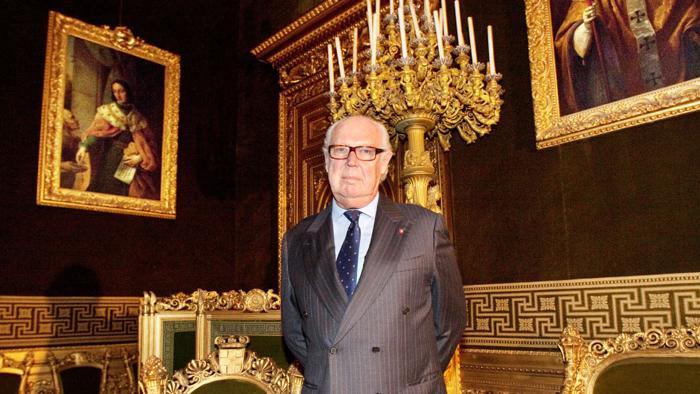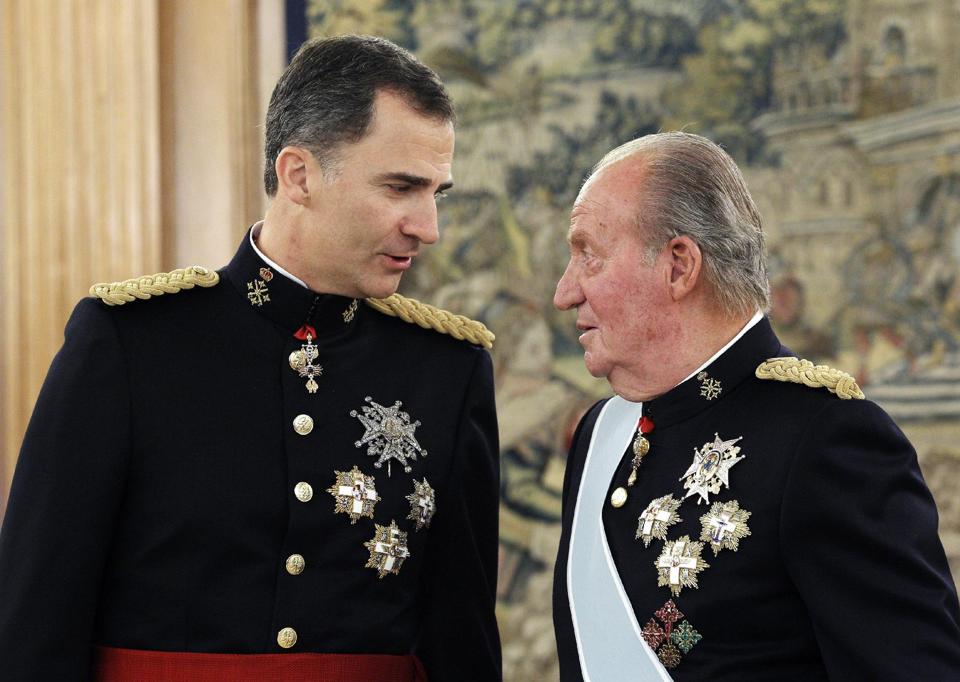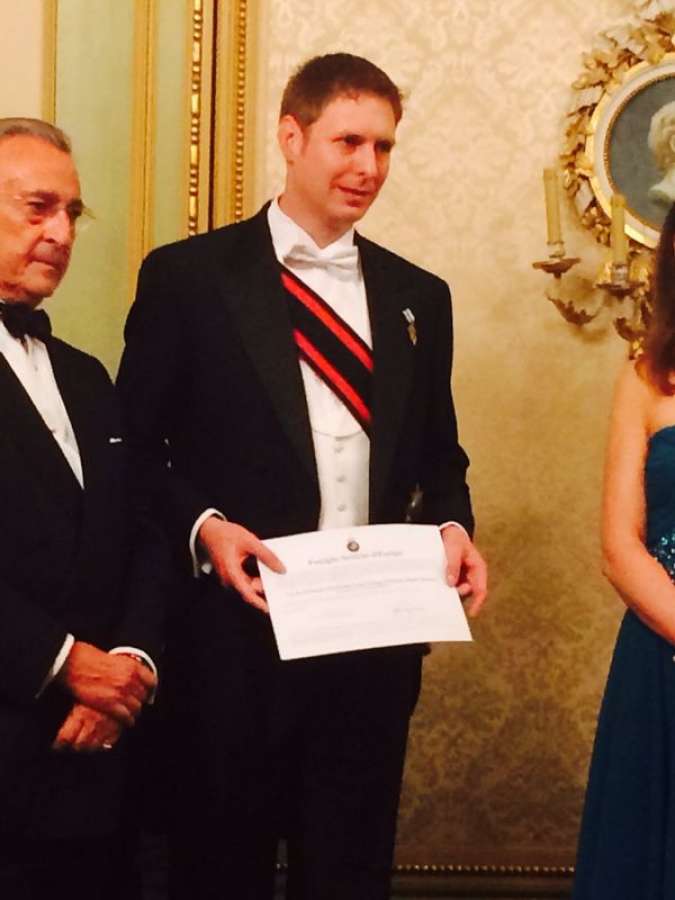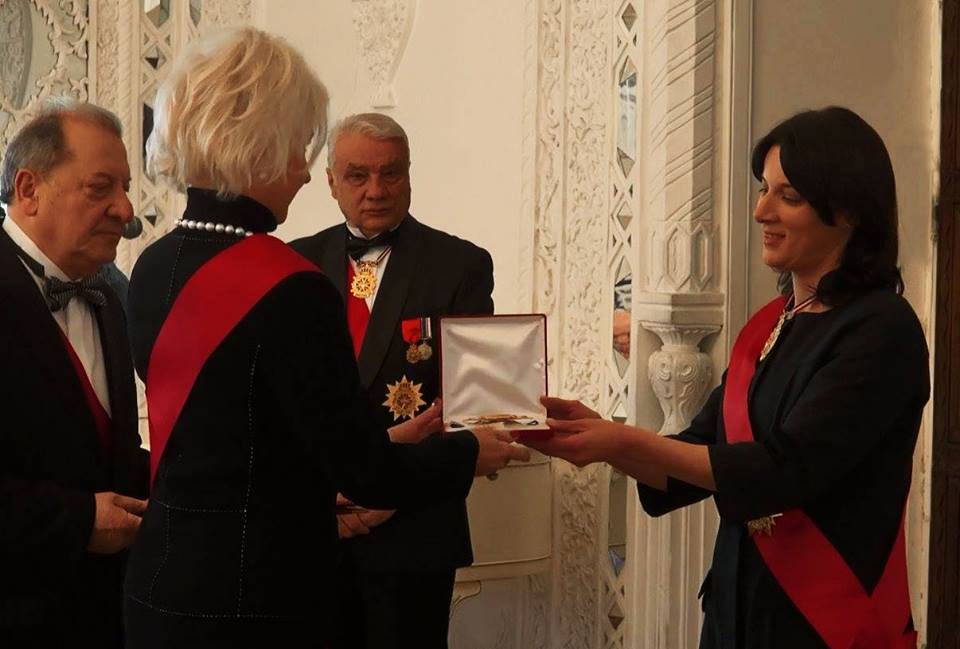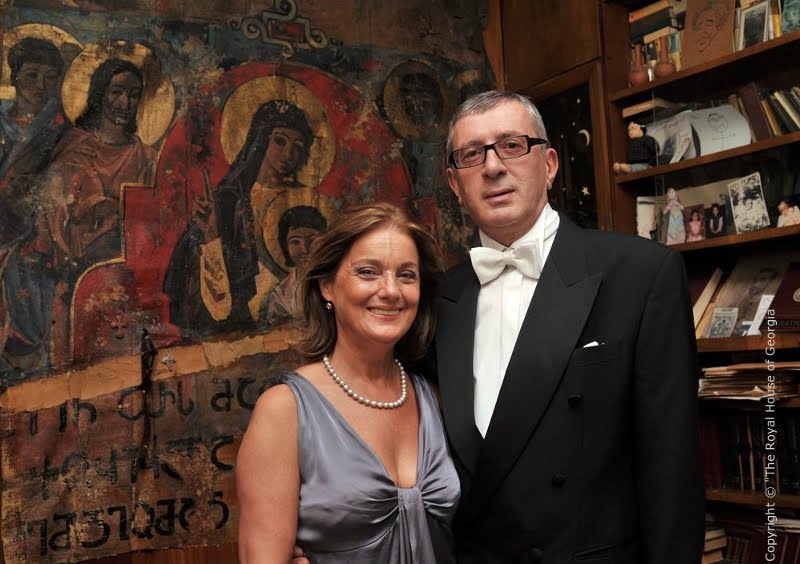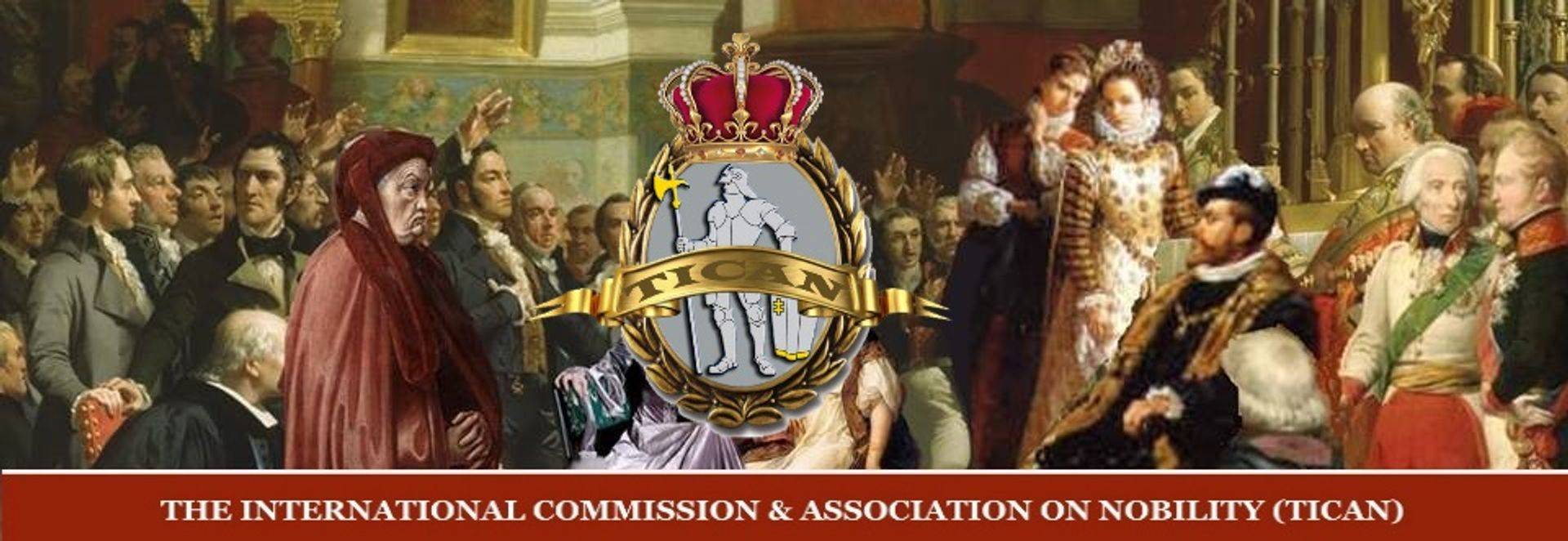
Title

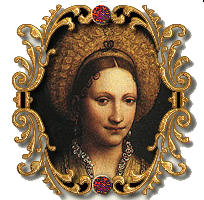 Monarchy, is a form of government in which a monarch, usually a single person, is the head of state. Monarchy is when a king, queen, or emperor that rule the country. Monarchy is one of the oldest types of government and has been in continuous existence for most of recorded history.
Monarchy, is a form of government in which a monarch, usually a single person, is the head of state. Monarchy is when a king, queen, or emperor that rule the country. Monarchy is one of the oldest types of government and has been in continuous existence for most of recorded history.
In most monarchies, the monarch holds their position for life and passes the responsibilities and power of the position to their children or family when they die. In a few republics the head of state, often styled president, might remain in office for life, but most are elected for a term of office, after which he or she must step down, and any successors must then also be elected. There are currently 31 monarchs reigning over 45 extant sovereign monarchies in the world; the disconnect in numbers between monarchs and countries is explained by the fact that the sixteen Commonwealth realms - vast geographic areas including the trans-continental realms of Canada and Australia - are separate realms of one Sovereign in personal union; and one other monarchy, Andorra, has two non-resident foreign (French and Spanish) co-monarchs, one of which is part of the government of a republic (the French one).
The term monarchy is also used to refer to the people (especially the dynasty, also known as royalty) and institutions that make up the royal or imperial establishment, or to the realm over which the monarch reigns. Monarchs serve as symbols of continuity and statehood. Today, the extent of a monarch's actual powers varies from monarchy to monarchy. In constitutional monarchies, wherein sovereignty rests formally with the crown but politically with 'the people' (usually the electorate, as represented by a parliament), the monarch now usually serves largely ceremonial functions, except in times of crisis. Many monarchies are constituted by tradition or by codified law, so that the monarch has little real political power; in others the monarch holds some power but is limited from exercising it by popular opinion or precedent; in still others the monarch holds substantial power and may exercise it without limit. However, the majority of monarchs today are bound by rule of law rather than rule of human will.
Monarchy is one of the oldest forms of government, with echoes in the leadership of tribal chiefs. Many monarchs once claimed to rule by divine right, or at least by divine grace, ruling either by the will of the god(s) or even claiming to be (incarnated) gods themselves (see theocracy). Monarchs have also been selected by election (either in a broad popular assembly, as in Germanic tribal states; or by a small body, such as in the Holy Roman Empire, and as in Malaysia and the UAE today; or by dynastic succession; or by conquest; or a combination of any number of ways). In some early systems the monarch was overthrown or sacrificed when it became apparent that divine sanction had been withdrawn.
Since 1800, most of the world's monarchies have been abolished by dismemberment or annexation, or have been transformed into republics; most current countries that are monarchies are constitutional ones. Among the few states that retain aspects of absolute monarchy are Brunei, Oman, Qatar, Saudi Arabia, Swaziland and the Vatican City (the papal city-state, an electoral theocracy). In Jordan and Morocco, the monarch also retains considerable power. There are also recent (2003) developments in Liechtenstein, wherein the regnant prince was given the constitutional power to dismiss the government at will. Nepal had several swings between constitutional rule and direct rule related to the Maoist rebel movement and killings by a suicidal crown prince. In December 2007 the Nepalese government agreed to abolish the country's monarchy after the Constituent Assembly elections in 2008.
Monarchy Today
Over the past centuries, monarchies have had an unwritten rule that required the monarch and those in the line of succession to marry a spouse from a royal or at least noble family. In most cases, royal families arranged marriages to strengthen the power or influence of the royal house by making strategic alliances, and they did not take an individual's personal feelings or preferences into consideration. This attitude started to change a few decades ago, with more and more monarchs deciding to marry for love regardless of the status of their spouse, and allowing their heirs to do the same.
As a result, commoners joined the royal circle and had to become familiar with the arcane rites and mystique that have always surrounded kings and queens, as well as the stress of living their lives in public and being the subject of relentless attention from the media.
the arcane rites and mystique that have always surrounded kings and queens, as well as the stress of living their lives in public and being the subject of relentless attention from the media.
While many of the current kings and queens fell in love with a royal or noble spouse, some decided to marry a commoner despite the prevailing royal preference for equal marriages. Some of the commoners who married into the current generation of rulers - Grand Duchess Maria Teresa of Luxembourg, Queen Sonja of Norway, and Empress Michiko of Japan. Other commoners - Queen Silvia of Sweden, Queen Rania of Jordan, and Lalla Salma of Morocco.
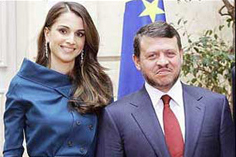
To look at the example of women who married into royal houses as commoners, we can see clearly that, regardless of their origins, the right person must be at the right place at the right time. Success or failure depends very much on the present circumstances of the monarchy, the monarchy's background and history, the attitude of the royal house and the public, and the traits of the future spouse. He or she needs to learn fast, handle the scrutiny of the media, and win the acceptance of the public, the key for the monarchy to survive.
OCTOBER 05 - 2011
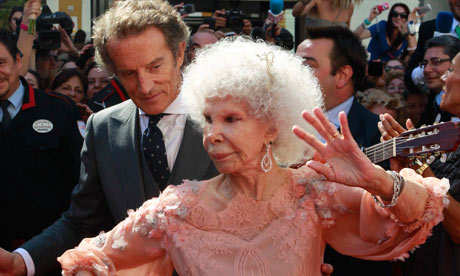
SPAIN?S DUCHESS OF ALBA REMARRIES AT 85
Spain's Duchess of Alba, whose full name is Maria del Rosario Cayetana Victoria Alfonsa Fitz-James Stuart y de Silva, has married civil servant Alfonso Díez, 25 years her junior.
85-year-old Cayetana Fitz-James Stuart, the Duchess of Alba and possessor of more aristocratic titles than anyone else in the world, has married Alfonso Diez, making the commoner the Duke of Alba.
The wedding took place in the chapel of one of the Duchess's palaces, the Dueñas Palace in Seville, with a variety of high-profile Spaniards, including the bride's children, in attendance.
The Spanish aristocrat has 46 titles, as she is a duchess, a countess and a marquesa several times over.
Gone are the days when young women paraded before their Sovereign like vestal virgins adorned in white with feathers, trains, and fans to make their deep, reverential, and well-practiced curtseys. Today ladiethes may p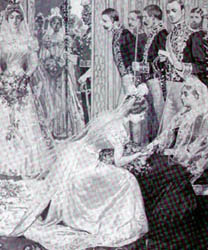 ractice in front of their mirrors night before they go to the Palace, but few take classes at the famous London finishing schools such as Lucie Clayton or dance classes at establishments such as Vacani's School of Dance, where The Princesses Elizabeth and Margaret learned to dance as children. The curtsey is a difficult maneuver to execute; if it goes right it looks excellent as you descend towards the ground while shaking hands with The Queen, but if it goes wrong you may end up falling over and making a fool of yourself in Her Majesty's gracious presence. According to Debrett's New Guide to Etiquette and Modern Manners, "Low sweeping curtseys, although usually well meant, are best reserved for the amateur dramatic stage and can be the subject of some amusement within Royal circles. Opt instead for a brief bob with the weight on the front foot."
ractice in front of their mirrors night before they go to the Palace, but few take classes at the famous London finishing schools such as Lucie Clayton or dance classes at establishments such as Vacani's School of Dance, where The Princesses Elizabeth and Margaret learned to dance as children. The curtsey is a difficult maneuver to execute; if it goes right it looks excellent as you descend towards the ground while shaking hands with The Queen, but if it goes wrong you may end up falling over and making a fool of yourself in Her Majesty's gracious presence. According to Debrett's New Guide to Etiquette and Modern Manners, "Low sweeping curtseys, although usually well meant, are best reserved for the amateur dramatic stage and can be the subject of some amusement within Royal circles. Opt instead for a brief bob with the weight on the front foot."
Men are blessed with having only to bow, the simplest act. A correct bow involves a deep nod, not a bow from the waist. Bowing from the waist should be reserved for when you are in Japan.
What is happening in Nepal?
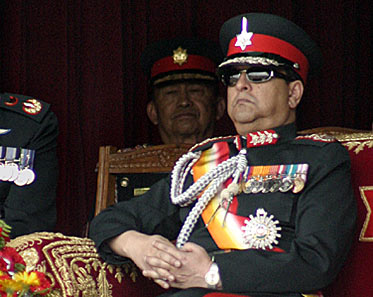
The Parliament of Nepal issued the King an eviction notice today: you?re not the king anymore, so get out of the Royal Palace in 15 days. His Majesty?s failure to timely vacate the premises, I presume, will result in further legal action being taken against him and may tend to damage his credit rating.
King Gyanendra has been "ruling" the country since 2001, when his nephew the Crown Prince went on a Virginia Tech-style rampage and shot up the Royal Palace, killing most of his family and eventually himself. (For several hours, it seems, he was King himself, having shot his father to death, before he checked himself out.) Gyanedra has proven very unpopular and in 2006 agreed to hand off the bulk of his governmental authority to Parliament.
What do Britain, Spain, Belgium, the Netherlands, Denmark, Sweden and Norway have in common?
In the past a royal marriage was an alliance of two monarchies. Princes married princesses, or at the very least members of the high aristocracy. But that was then. In the past five years all of European´s kings-in-waiting (which is what crown princes are) have dispensed with the old rules, and have wed commoners. European royals have married non-bluebloods before, but the new crop of future queens has crashed through the barriers of convention like a runaway train. Whether this change turns out to be a formula for survival or will spell doom for Europe´s monarchies in the 21st century remains to be.
We know the rules have changed radically when the heir to the British throne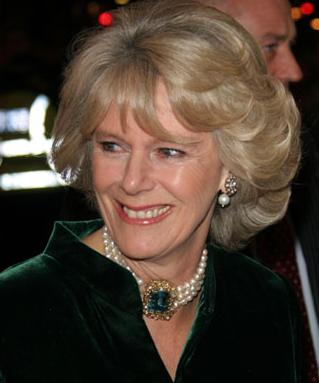 can marry a divorced commoner, Camilla Parker-Bowles, and get away with it. Less than 60 years ago, Charles? great uncle´s marriage to another non royal divorcee cost him his throne. The fact that King Edward VIII´s lover, Wallis Simpson, was a foreigner (American) didn´t help either. Even today British royalty still operates on a grander, more formal scale than any other existing monarchy; Britain´s monarch rides in a Rolls- Royce; her more informal royal cousins in the Netherlands and Sweden have been known to get about on bicycles. But from all accounts, Prince William, the next in line, is planning to take the changes still further by marrying former fellow student, Elizabeth Catherine (Kate) Middleton, 24, whose mother is a onetime airline stewardess and father the owner of a medium size party organizing business called Party Pieces.
can marry a divorced commoner, Camilla Parker-Bowles, and get away with it. Less than 60 years ago, Charles? great uncle´s marriage to another non royal divorcee cost him his throne. The fact that King Edward VIII´s lover, Wallis Simpson, was a foreigner (American) didn´t help either. Even today British royalty still operates on a grander, more formal scale than any other existing monarchy; Britain´s monarch rides in a Rolls- Royce; her more informal royal cousins in the Netherlands and Sweden have been known to get about on bicycles. But from all accounts, Prince William, the next in line, is planning to take the changes still further by marrying former fellow student, Elizabeth Catherine (Kate) Middleton, 24, whose mother is a onetime airline stewardess and father the owner of a medium size party organizing business called Party Pieces.
WILL MONARCHY SURVIVE IN THE FUTURE?
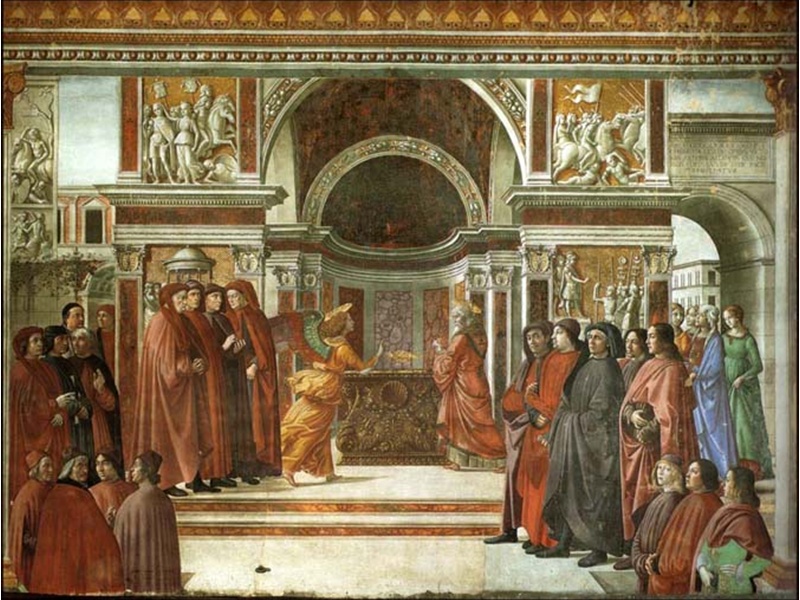
WHY WE SUPPORT MONARCHY?
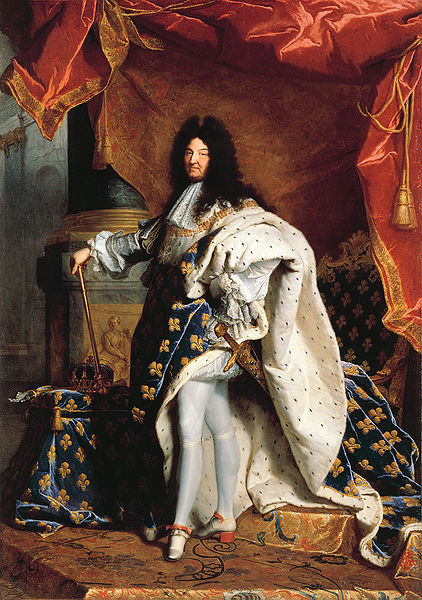
Today's monarchy is not an impediment for development of a country and it's very efficient and performing. And we benefit from the security provided by a permanent monarch. The Sovereign represents the people toward the government and this one has the responsibility to protect people from abuse of the government. On the other hand, in a constitutional monarchy, the King/Queen does not do everything he/she wants. He/she has some limits to respect and he/she has the traditional right to "advise, listen and warn" and he/she must be aware about all important decisions and files from the government. After First World War, many monarchies have been removed and those who stayed have been able to adapt their constitution to the modern life.
On the other hand, contrary to a Republic's President (like France, USA etc.) the Sovereign will insure the continuity in a time schedule. He/she is always aware about important files and he/she acts to push these files up to their conclusion. That is not the case for a president. When his period will be ended, he will return to the everyday's life and another President will come with his idea and knows how.
A Constitution regulates the powers of the King (or Queen) but powers of that person are very wide and the Monarch uses them at his (her) discretion, as often as necessary.
Yesterday like today all of those that were in the neighbored of the Royal Court were noble.
Many of them inherited their titles at birth, some others by the king himself. This practice exists today but with a wider range because of many changes in the International Protocol and Slavic Law or other Nobility´s rules. Now, more people can be honored.
In fact, after the last two World Wars, some royals and noble families were conscious that their number was decreasing. Changes had to be done to increase this number in a way to keep nobility well alive and active. For instance, even today, a non reigning Prince can transmit titles or create new one! It is also common practice today, that a nobleman marries a commoner. The wife will inherit her husband´s titles and their heirs too. In Middle Age it was not permitted and it was disgraceful to do so.
The International Commission and Association on Nobility strive to promote nobility and royalty and wish to bring all noble persons living on our toward a central point of meeting and brotherhood and to bring citizens toward an interest of nobility.
The institution of monarchy in Thailand
The institution of monarchy in Thailand is in many ways unique, often difficulty for outsiders to fully comprehend. Not only does it have a history going back more than seven hundred years, but it also continues to function with extraordinary relevance and vitality in the contemporary world.
Although the 1932 Revolution brought an end to absolute monarchy, the institution today can be said to be more powerful than ever in the sense of providing a unifying element for the country ? a focal point that bridges together people from all backgrounds and shades of political thoughts and gives them an intense awareness of being Thai.
(His Majesty King Bhumbol Adulyadej of Thailand, born December 5 1927, died October 13 2016 at age 88)
 His Royal Highness Crown Prince Nugzar of Georgia
His Royal Highness Crown Prince Nugzar of GeorgiaPrince Nugzar is the son of Prince Petre Bagration-Gruzinsky of Georgia (1920-1984), a prominent poet and claimant to the headship of the Georgian dynasty from 1939 until his death, and his second wife Liya Mgeladze (b. 8 August 1926). Prince Nugzar is the director of the Tbilisi theatre of cinema artists.
On 18 December 2007, Nugzar met with Kristiina Ojuland, the Vice-President of the Riigikogu (Parliament of Estonia) at the Mariott-Tbilisi Hotel in which Ojuland "paid homage to the Bagrationi dynasty, which has made an extraordinary contribution in support of Georgia".
Prince Nugzar is the senior descendant by primogeniture in the male line of George XII, the last King of Georgia (Kartli and Kakheti) to reign.
Nugzar married actress Leila Kipiani (b. Tbilisi July 16, 1947) on February 10, 1971, and they have two daughters:
- HRH Princess Anna Bagration-Gruzinsky, b. Tbilisi November 1, 1976. Married firstly to Grigoriy Malania and had two daughters with him, Irina and Miriam, and secondly, to Prince David Bagration of Mukhrani with whom she has a son, Prince Giorgi Bagrationi (born 2011)
- HRH Princess Maia Bagration-Gruzinsky, b. Tbilisi January 2, 1978. She married Nikolai Chichinadze and has two children with him, Themour and Anna Chichinadze.
As Nugzar has no male issue, Evgeny Petrovich Gruzinsky (born 1947), the great-great grandson of Bagrat's younger brother Ilia (1791-1854), who lives in the Russian Federation, is considered to be an heir presumptive within primogeniture principle. Nugzar himself argues in favor of having his eldest daughter, Anna, designated as his heir in accordance with the Georgian dynastic law of "Zedsidzeoba" by which every child born from Princess Anna will inherit the royal dignity from mother's side thus will continue the royal line.
Nugzar's daughter, Princess Anna, a divorced teacher and journalist with two daughters, married Prince David Bagration of Mukhrani, on 8 February 2009 at the Tbilisi Sameba Cathedral. The marriage united the Gruzinsky and Mukhrani branches of the Georgian royal family, and drew a crowd of 3,000 spectators, officials, and foreign diplomats, as well as extensive coverage by the Georgian media.
The dynastic significance of the wedding lay in the fact that, amidst the turmoil in political partisanship that has roiled Georgia since its independence in 1991, Patriarch Ilia II of Georgia publicly called for restoration of the monarchy as a path toward national unity in October 2007. Although this led some politicians and parties to entertain the notion of a Georgian constitutional monarchy, competition arose among the old dynasty's princes and supporters, as historians and jurists debated which Bagrationi has the strongest hereditary right to a throne that has been vacant for two centuries.
Prince Giorgi, the son of prince David and HRH Princess Anna of Georgia, was born on September 27, 2011 in Madrid, Spain. Currently Nugzar does not officially recognize his grandson as heir to the Georgian throne. He continues to demand that David sign a written agreement in which he would recognize Nugzar and the Gruzinsky branch as the sole rightful heir to the Georgian throne and to the legacy of the Georgian kings.
Prince Giorgi's royal christening was held on 3 November 2013 by Patriarch Ilia II of Georgia in Svetitskhoveli Cathedral in Mtskheta. His godfathers are the patriarch himself (due to as the boy is being the third child of HRH Princess Anna and by the will of the Patriarch every third child in Georgia becomes godchild of His Holiness. Almost up to 10.000 new born children in Georgia already are as godchildren of Patriarch), his uncles Irakli and Ugo, Levan Vasadze, said to be closely associated with Prime Minister Bidzina Ivanishvili and the new President Giorgi Margvelashvili, and Mikheil Akhvlediani, the honorary consul of Spain and seneschal , Government ministers Irakli Alasania and Nodar Khaduri were also present in the ceremony as well as guests from Russia, Serbia, Spain, Portugal, Italy, United States and Romania.
Prince Nugzar Bagration-Gruzinsky after the christening of his grandson said:
HH the Patriarch at first said that the child is a heir from her royal mother as of Kings Erekle II and Giorgi XII and only then he mentioned that from fathers side he is Prince Mukhranbatoni:
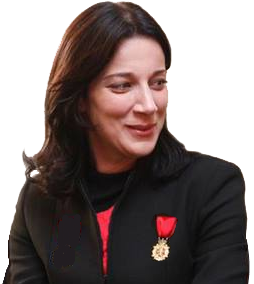 Heir: HRH Princess Anna Bagrationi-Gruzinski daughter of HRH Crown Prince Nuzgar of Georgia
Heir: HRH Princess Anna Bagrationi-Gruzinski daughter of HRH Crown Prince Nuzgar of Georgia HRH Anna Nugzaris Asuli Bagration-Gruzinsky (Georgian: ანა ნუგზარის ასული ბაგრატიონი გრუზინსკი) (born November 1, 1976, in Tbilisi) is a royal princess of the Gruzinsky branch of the Bagrationi dynasty of Georgia.
HRH Princess Anna is the eldest child of the head of the Gruzinsky branch of the House of Bagrationi, Prince Nugzar Bagration-Gruzinsky, spouse of Prince David Bagration of Mukhrani and mother of Prince Giorgi Bagration (born 2011).
Princess Anna first married to Grigol Malania, who descends matrilineally from the last king George XII of Georgia, and has two daughters by that marriage which was implemented in full compliance with the Georgian Dynastic Law. Thus these children have the royal name of Bagrationi-Gruzinskis and who are the dynasts of the royal house of Georgia.
- HRH Princess Irina Gruzinsky (born in 2003)
- HRH Princess Mariam Gruzinsky (born in 2007)
The second marriage of H.R.H. Princess Anna of Georgia with Prince David Mukhranskion on 8 February of 2009 should also be recognized to be in accordance with the Georgian dynastic law of “Zedsidzeoba”. It is important to mention that under the Georgian Dynastic Law this marriage does not give Prince David any sovereignty. Under this law, Prince David would be recognized solely as the Prince consort for H.R.H. Princess Anna of Georgia.
Accordingly, the born child from this marriage would inherit royal rights from the line of his mother. It is important to note that by Georgian Dynastic Law a male descendent of the Royal House has priority over any females in the line of succession.
Representatives of the two families, Bagrationi-Gruzinski and Bagration Mukhranski, collaborated on a post-marriage dynastic succession agreement, and the outline of the agreement was sent to His Holiness, the Patriarch of Georgia, Ilia II (This agreement acknowledged H.R.H. Prince Nugzar’s line as the true royal line with his dynastic rights passing to the children of Prince David and H.R.H. Princess Anna). Unfortunately, Prince Davit left the country without completing the request and signing this important document.
Thus, if above mentioned marriage will fit the Dynastic Law then Prince Giorgi will surpass his older sisters in the line of succession - Were Prince Giorgi to become a dynast, he would be the heir apparent to the throne after his mother.
THE HOUSE OF BOURBON - TWO SICILIES
May 23, 2016
Family feuds seem to be part of the social fabric of Italian life, and some distance generations. Only hardly are they resolved amicably. The unpleasant effects of this one reached the governments of Italy, Spain, and the Vatican.
The family reconciliation in the house of Bourbon-Two Sicilies seems to be short-lived. In 2014 the two rivalling branches - both of which are claiming the headship of the family which until 1861 ruled over the Kingdom of the Two Sicilies - signed an agreement recognizing each other’s titles. The decision of the duke of Castro to change the succession laws so he could be succeeded by his eldest daughter apparently brought the reconciliation to an end. The Duke of Calabria (Prince Pedro of Bourbon-Two Sicilies, Duke of Calabria) - 2nd cousin of King Felipe VI of Spain- is having none of it.
On May 21st the duke of Calabria issued a statement in which he states that the duke of Castro has no power to change the succession laws of the House of the Two Sicilies. He also states that the unilateral decision of the Duke of Castro contradicts the Naples agreement of 2014 and makes it difficult to preserve peace and harmony in the family.
In Naples, on 25 January 2014, on the occasion of the beatification of Maria Cristina of Savoy, first consort of King Ferdinand II of the Two Sicilies and mother of Francesco II, last King of the Two Sicilies, Prince Carlo, Duke of Castro, and Prince Pedro, Duke of Noto, second cousins once-removed, signed a dynastic agreement of reconciliation ending over a half-century of bitter acrimony between rival branches of the dynasty that ruled southern Italy until 1861. The agreement establishes mutual recognition of the cousins' dynastic positions and titles, and a promise by each to work toward common objectives in the future.
Duke of Castro Abolishes Salic Law
The Duke of Castro, one of the claimants of the defunct throne of the Kingdom of the Two Sicilies, announced that he had changed the succession laws of his family. He abolished the Salic law and made the succession gender neutral. The duke only has two daughters: princesses Maria Carolina and Maria Chiara. The duke announced the change yesterday, the day that both daughters received their Holy confirmation in Rome, under the watchful eye of over 1000 knights and dames of the Sacred Military Constantinian Order of Saint George.
The Kingdom of the Two Sicilies
The Kingdom of the Two Sicilies (Italian: il Regno delle Due Sicilie) resulted from the unification of the Kingdom of Sicily with the Kingdom of Naples, by King Alfonso V of Aragon in 1442. The two had been separated since the Sicilian Vespers of 1282. At the death of King Alfonso in 1458, the kingdom became divided between his brother John II of Aragon, who kept Sicily, and his natural son Ferdinand, who became King of Naples. Since 1861, and similarly to members of the House of Bourbon-Parma, the style Prince (ss) of Bourbon-Two Sicilies has been used for and by members of this family to highlight their membership in the House of Bourbon. The title of princess is also born by the wives of the princes of the house provided the marriage is approved.
Like the House of Savoy and many other non-reigning royal families, the House of the Two Sicilies finds its headship contested - in this case by one of Infante Carlo's cousins who was a member of the Royal House of Spain. As the Savoy’s, the last dynasty to reign in Italy, have not sat on a throne since Italy became a republic in June 1946, and the chance of Italy becoming a monarchy could be said not to even transpire.
The Italian Republic's recognition for cultural purposes of royal dynasties other than the House of Savoy served to bolster a return of adherence to nobiliary laws as these had existed before 1860. The dynasties of the Two Sicilies and Tuscany naturally recognize their own heraldic norms, rather than those of the House of Savoy. The two orders of knighthood (Order of Malta and Constantinian Order of St. George of the Two Sicilies) that recognize ancestral nobility for certain knights employ their own nobiliary standards, which in a few respects differ from those employed in the Savoy dominions in recent centuries.
The dispute
The current headship of this family is in dispute. Though complicated arguments have been made supporting both sides of the current dispute, essentially it comes down to whether Prince Carlo (1870-1949), validly renounced his rights to the throne of the Two Sicilies in 1900. His descendants argue that the renunciation clearly applied only in the case that he or his descendants should succeed to the Spanish throne. Various interpretations have been made of the acts and statutes involved, and the dispute seems to be without a definitive resolution. Certainly the partisans of the two claimants make their arguments with great passion. If the renunciation is valid, the head is Prince Charles, Duca di Calabria (b.1963). If not, the head is Prince Carlos, Duca di Calabria (b.1938). In 2014 the two contending branches entered into a mutual agreement whereby they recognize each other's titles and present themselves as a united family. However, the issue of succession to headship of the family was not addressed.
Origin of the Two Sicilies
Before the French invasions of the Napoleonic Era, the Bourbon dynasty ruled over the same lands, but they were formally divided into the "Kingdom of Naples" and the "Kingdom of Sicily". Charles VII inherited the Spanish Crown as Charles III of Spain on 10 August 1759. By article II of the Treaty of Naples of 3 October of that year, he was required to establish the Infante Don Ferdinando, his third son (fourth-born since the exclusion of the eldest (Prince Philip, Duke of Calabria) was severely retarded) as King of the Two Sicilies. The new Sovereign received the Two Sicilies Crown, as Ferdinando IV of Naples and III of Sicily, by the Pragmatic Decree of 6 October 1759. This ordained that the succession should pass by male primogeniture among the descendants of King Ferdinand, and failing them of his younger brothers, unless the Crown of Spain was united with the Sovereignty of the Two Sicilies, in which case the latter had to be ceded to a son, grandson or great-grandson of the prince who so combined both successions. In the event of the male heirs of King Carlos III becoming extinct, the Two Sicilies Crown would pass to the nearest female heiress of the last King. After the change in the name of the kingdom, Infante Ferdinand became known as King Ferdinand I of the Two Sicilies.
Heads of the Royal House of the Two Sicilies, 1861-present
Upon Ferdinando Pio's death in 1960, there was a dispute about who inherited the headship of the house. He was head of the House of Bourbon-Two Sicilies and pretender to the throne of the extinct Kingdom of the Two Sicilies from 1934 to 1960.
Ferdinando's next brother Carlo had, in anticipation of his marriage to the eldest sister and heiress presumptive of King Alfonso XIII of Spain, signed the so-called Act of Cannes on 14 December 1900:
“...Here present is His Royal Highness Prince Don Carlo our dearest loved Son and he has declared that he shall be entering into marriage with Her Royal Highness the Infanta Doña Maria Mercedes, Princess of the Asturias, and assuming by that marriage the nationality and quality of Spanish Prince, intends to renounce, and by this present act solemnly renounces for Himself and for his Heirs and Successors to any right and rights to the eventual succession to the Crown of the Two Sicilies and to all the Properties of the Royal House found in Italy and elsewhere and this according to our laws, constitutions and customs of the Family and in execution of the Pragmatic Decree of King Charles III, Our August ancestor, of the 6th October 1759, to whose prescriptions he declares freely and explicitly to subscribe to and obey”.
The laws of the deposed Sicilian dynasty and Spain's Pragmatic Decree, however, required a renunciation only in very limited circumstances: the actual union of the Crown of the Two Sicilies in the person of the King of Spain or his heir apparent, which had not happened in 1900 nor did it occur subsequently. Furthermore, this act was signed subsequent to the agreement by marriage contract between the Count of Caserta (the father of Prince Carlo, then in exile), and the Queen Regent of Spain, which specifically excluded the need for a dynastic renunciation to the non-existent throne. Prince Carlo was created an Infante of Spain, a title held by several other princes of the Two Sicilies in the past, but with his wife's death and the birth of a Prince of Asturias (and three other sons) to the King and Queen of Spain, the possibility of him becoming king consort and his son becoming both King of Spain and pretender to the Two Sicilies, receded. All the descendants of King Francis I of the Two Sicilies by his wife, Infanta Isabel, already enjoyed a right to the Spanish throne by virtue of the royal constitutions of 1837, 1845 and 1876.
Even if, supportive of the claim of Infante Carlos de Bourbon assert, the Act of Cannes were not actually necessary based on dynastic law as it was understood in 1900, the renunciation thus effected could no more be annulled or refuted in 1960.
Calabria line
Prince Carlo's son, Infante Don Alfonso, became the senior male of the house on the death of his uncle, Ferdinando Pio, Duke of Calabria, in 1960 and was proclaimed Head of the Royal House of the Two Sicilies, with the recognition of the Heads of the royal houses of Spain, Parma and Portugal, and the senior line (Bourbon) pretender to the throne of France. Prince Carlo and his descendants continued to be included as Princes of the Two Sicilies in the Almanach de Gotha from 1901-1944, and in the Libro d'Oro of the Italian Nobility from the first edition in 1907 until 1964, at which time the editor came out in support of the cadet line claimant. Infante Don Alfonso took the title of Duke of Calabria, considering that the title of Duke of Castro (a Farnese inheritance) had been lost with the sale of the last portions of the duchy to the Italian government in 1941 (a sale from which Prince Carlo received his portion of the proceeds, along with his brothers and sisters, although if the alleged renunciation of 1900 had been valid he would not have been entitled to do so). Prince Carlo married as his second wife, in 1907, Princess Louise of Orléans, and by her had a son (Carlos, killed in the Spanish Civil War) and three daughters (of whom Princess Maria Mercedes married Juan, Count of Barcelona and was the mother of King Juan Carlos I of Spain, and Princess Esperanza married Prince Pedro Gastão of Orléans-Braganza).
The latter's immediate heir is Pedro, Duke of Noto, married to D. Sofia de Landaluce y Melgarejo (a descendant through her mother of the Dukes of San Fernando de Quiroga).
Most of the rest of the Bourbon-Two Sicilies family rejected Alfonso's claims, however, and recognized Ranieri, the next surviving brother of Ferdinando Pio, as head of the house. Ranieri took the style of "Duke of Castro" as his title of pretense. They also claim the office of the Grand Master of the Sacred Military Constantinian Order of Saint George.
Current lines of succession
To Prince Ferdinand, Duke of Castro:
- Prince Carlo of Two Sicilies, Duke of Calabria (born 1963), married to Camilla Crociani
- Prince Antoine of the Two Sicilies (born 1929), married to Duchess Elizabeth of Wurttemberg
- Prince François of the Two Sicilies (born 1960), married to Countess Alexandra of Schönborn-Wiesentheid
- Prince Antoine of the Two Sicilies (born 2003)
- Prince Gennaro of the Two Sicilies (born 1966)
- Prince Casimir of the Two Sicilies (born 1938)
- Prince Louis of the Two Sicilies (born 1970) married to Christine Apovian
- Prince Alexander of the Two Sicilies (born 1974)
CONCLUSION
Headship of the House of Bourbon-Two Sicilies
In 2008, H.R.H. Prince Charles of Bourbon Two Sicilies, Duke of Castro succeeded his father as claimant to the headship of the House of the Two Sicilies. As head of the house, he uses the title Duke of Castro.
Carlo's supporters state that since his grandfather's brother Infante Carlos renounced his rights and those of his successors to succession to the throne of the Two Sicilies in 1900, the headship of the house passed to Carlo's grandfather Ranieri, Duke of Castro, then to Carlo's father Ferdinand, Duke of Castro, and most recently to Carlo. Infante Carlos's claims to be the Duke of Calabria and head of the House of Bourbon-Two Sicilies are recognized by the previous Spanish King Juan Carlos of Spain (since they are cousins), while the other royal families and all other Bourbon-Two Sicilies members recognize the Castro claim.
Carlo is married to H.R.H. Princess Camilla of Bourbon Two Sicilies, Duchess of Castro
They have two children:
- HRH Princess Maria-Carolina Chantal Edoarda Beatrice Januaria of Bourbon-Two Sicilies, Duchess of Palermo (23 June 2003) born in Rome
- HRH Princess Maria Chiara Amalia Carola Louise Carmen of Bourbon-Two Sicilies, Duchess of Capri (1 January 2005) born in Rome
On 14 April 2011, the Duke and Duchess of Castro attended the joint christening of Crown Prince Frederik and Crown Princess Mary of Denmark's twin children, Prince Vincent and Princess Josephine at the chapel of the Church of Holmen in Copenhagen, Denmark. Carlo is one of six godparents to Princess Josephine. The Duke of Castro is also a godfather of Prince Gaston of Orléans.
THE KINGDOM OF BUNYORO-KITARA
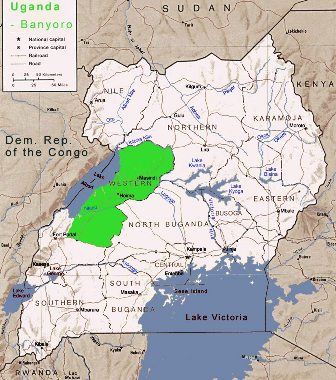
The Constituent Kingdoms of Uganda
Uganda, as a landlocked African nation, experienced colonialism only in the late 19th century, well after European interests had taken control in most other regions of Africa. In the late 19th century it became a protectorate under the British, and unlike many other colonies, the kingdoms and nations within the protectorate retained a wide degree of self-determination. For example, many of the Bantu kings that ruled in the south continued to rule despite the British interests controlling many economic and inter-kingdom affairs. (Like most of Africa’s nations, Uganda’s political boundaries are nonsensical when looking at the peoples that make up its border. Because of this, many aspects of late-nineteenth century African society and the ancient political system survived the colonial experience in Uganda, despite being wiped out in most other parts of the continent.
Perhaps ironically, the Bantu kingdoms that survived the British did not survive their departure. When Uganda became independent in 1963 and abolished commonwealth monarchy, it then proceeded in 1967 to abolish the remaining monarchies. In 1993, the government of President Museveni permitted the Bantu kingdoms to reincorporate, to the extent they were “cultural institutions,” not political institutions. Of course, politics is inevitable in everything—but the real meaning of the restoration of the kingdoms was that the kings have no powers to tax, and receive little funding from the government, requiring them to survive on their own business acumen and their connections.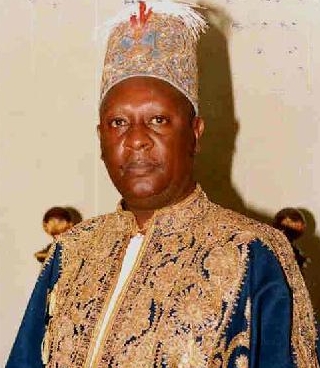
On July 24, 1993, the Republic of Uganda constitutionally re-established the traditional kingdoms that thrived in ancient times but had been abolished by a dictator in 1967. Unlike the broad political power and rights the ancient kings held, the new kings have no political power per se. However, they serve as titular heads of the various regional governments in Uganda, as codified in 8(a) of the Fifth Schedule of the Article 178 of the Constitution of the Republic of Uganda (2005 Amendment). In addition, His Majesty King Solomon Iguru was specifically recognized as the rightful King of Bunyoro-Kitara by the Supreme Court of Uganda (see Civil Appeal 18/94 Prince J.D.C. Mpuga Rukidi vs. Prince Solomon Iguru and Hon. Henry Kajura and All Members of the Committee of Coronation of Prince Solomon Iguru of April 25, 1994). Similar to other reigning monarchs, the traditional kings currently serve as "cultural figures" or "traditional leaders" and are barred from engaging in politics. As such, these "living symbols" are an inspiration in remembrance of the greatness of the past.
Role of traditional or cultural leader
Where a traditional leader or cultural leader exists in a region the traditional or cultural leader shall—
- (a) be the titular head of the regional government;
- (b) be the titular head of the regional assembly and shall open, address and close the sessions of the regional assembly; and
- (c) enjoy the benefits and privileges and roles as provided for in article 246 of this Constitution and by Parliament and the regional assembly.
The Supreme Court of Uganda went even further than the Constitution of Uganda, as it specifically listed the role of Bunyoro's traditional leader -- the Omukama -- as King in English. This is no doubt due to the powerful historical and ancient role of the Omukama and its continued role today. The lawsuit substantiated Prince Solomon Iguru's (now King Solomon Iguru I) right to be King of Bunyoro-Kitara.
H.M.King Solomon Iguru I's mission is to give his subjects cultural leadership and to be a catalyst in the development process. He was enthroned on June 11th, 1994 as the 49th Omukama of the Kingdom and 27th Omukama of the Babiito dynasty. Today, Bunyoro remains one of the five constituent kingdoms of Uganda, although there are additional cultural leaders recognized in other regions of Uganda besides the five kings. But King Solomon Iguru 1st is more. Because his ancestors never renounced their rights, never abdicated the kingdom, never ceded sovereignty, suffered exile rather than capitulate and concede anything, they maintained their original royal status and sovereign rights under the rules of "prescription." This is very significant as King Solomon is not simply a constitutional king. He is also the heir to a dynasty that has kept all its ancient rights intact.
Bunyoro is a kingdom of western Uganda and was one of the most powerful kingdoms of East Africa East from the 16th-19th century. It is ruled by the Omukama of Bunyoro. The current ruler is Solomon Iguru I, 27th Omukama (king) of Bunyoro-Kitara, and his wife is the Queen or Omugo Margaret Karunga. The Royal Palace, called Karuziika Palace, is located in Hoima
Omukama of Bunyoro is the title given to rulers of the central African kingdom of Bunyoro-Kitara. The kingdom lasted as an independent state from the 16th to the 19th century. The Omukama of Bunyoro remains an important figure in Ugandans politics, especially among the Bamyoro people of whom he is the King.
The people of Bunyoro are also known as Nyoro or Banyoro (singular: Munyoro) (Banyoro means "People of Bunyoro"); the language spoken is Nyoro (also known as Runyoro). Traditional economies revolved around big game hunting of elephants, lions, leopards, and crocodiles, but are now agriculturalists who cultivate bananas, millet, cassava, yams, cotton, tobacco, coffee, and rice.

